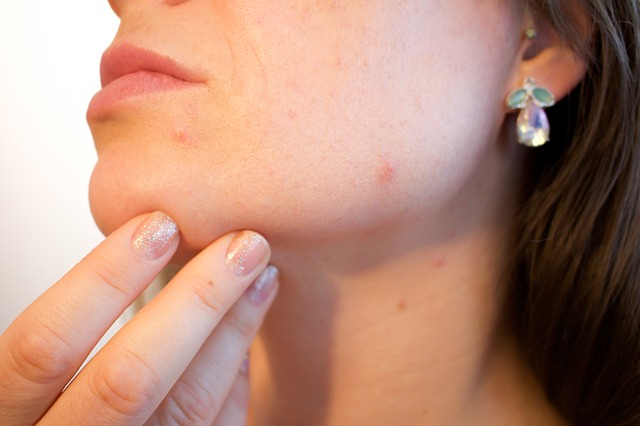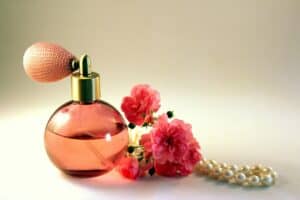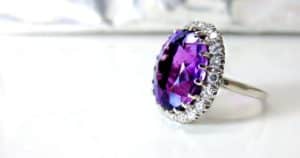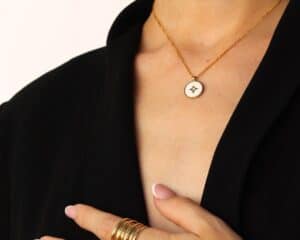Let’s face it! Fake jewelry is exciting and pretty!
I have been a big fan of fake jewelry since my teens (when I rarely had any money to spend on accessorizing). The design options in fake jewelry are diverse and they come at very affordable prices. But I have had friends and family who do not share the same experience about wearing fake jewelry, as me.
If you are somebody who shudders at the thought of fake jewelry allergy owing to either a nasty past experience, or are generally scared to try them on, then this is the post for you. We will debunk the fake jewelry allergy myth and help you dawn your favorite designs with confidence.
Can you be allergic to fake jewelry?
A lot of people are allergic to fake jewelry and you can hear complaints of skin rashes, break-outs and irritation, the moment they put on fake jewelry. You can be allergic if you experience similar symptoms when you put on your fake jewelry.
Fake, imitation or costume jewelry is made out of substances such as plastic, low quality metals, rubber, or resins, all of which can prove to be irritants to your skin.
A major culprit in this regard is nickel, which is found in most of the costume jewelry available out there.
What is fake jewelry allergy and why am I allergic to fake jewelry?
Fake jewelry allergy is irritation or redness caused to the skin. It is caused by our immune system finding the jewelry as a threat. Our immune system works by fighting bacteria, viruses and other harmful substances. In case the immune system gets a signal that the piece is harmful, it tries to protect itself which leads to the skin reacting with it.
It cannot be said why immune systems of different people react differently to same metals. A loft of different people are allergic to different metals or substances. Therefore the exact reason for fake jewelry allergy cannot be known.
How do you know if you are allergic to your fake jewelry?
If you experience any redness or itching post exposure to your piece of jewelry, there are high chances that you are allergic to it. The symptoms normally appear within first 12 to 36 hours of being exposed to fake jewelry. In the initial phase, the symptoms appear to subside when you take off the item causing the allergy. Over prolonged exposure, the red patch or itchiness remains even when you are not wearing your fake jewelry.
You may experience any of the following symptoms:
1. Redness or development of rashes
2. Itching in the affected area
3. Build up of pus in the area
4. Pain
5. Swelling of the skin
6. Dry or irritable skin
Can you overcome a fake jewelry allergy?
The sad answer to this is NAY. Once you have developed an allergy to fake jewelry, there isn’t much you can do to overcome it, except for taking years of anti-allergic medication. A better strategy however is to find ways to still wear fake jewelry, in spite of being allergic to it.
For that, you can try different DIY techniques and see what works best for you. E.g., Clear Nail polish application to the contact portion of jewelry is a quick hack that is most recommended for people with fake jewelry allergy.
The Clear Nail Polish/Duct Tape Hack
The basic premise of the clear nail polish/duct tape hack in helping you wear fake jewelry in spite of being allergic to it, is the creation of a barrier. A light coat of a clear nail polish on the area of the jewelry which comes in direct contact with the skin is what brings about this barrier, and helps you avoid allergic reactions.
This certainly isn’t a fool-proof hack as there obviously will be the front portions of your earrings, bangles or bracelets that will come in contact with your skin, you can maximize its benefits. Just make sure you apply an even coat of nail polish on the smooth contact end, as well as the edges.
You might have to do it often if the piece is worn very frequently.
I use this clear nail polish, you can use any you have available at home.
How do you stop being allergic to fake jewelry?
If you are allergic to any metal in your jewelry, you cannot stop being allergic. However, there are many hacks that might still help you wear that piece you got as a gift from someone. You can try the following and see what works for you.
- Using clear nailpolish on earrings, back of your necklaces and on the inside of your bracelets.
- Applying vaseline to the post of the earrings or at the back of the jewelry. If possible, apply a little on the area of the skin that is going to be exposed to the piece of jewelry a little before wearing it.
- Using plastic or silicone earring covers instead of metal ones.
- If you are skilled enough, buy loose hooks of hypoallergenic metal and replace the ones causing allergy. You can also make your own pieces. A friend of mine makes her own pieces out of threads, beads, shells, feathers, stones and uses these hypoallergenic hoops.
How to choose fake jewelry that will not cause an allergic reaction?
The variety and options available in the market never cease to amaze me. If you are allergic to certain metals, you can check out costume jewelry that is made purely of stones, gemstones, glass, clay, ceramic, pearls, grains (rice jewelry), wood, shells, feathers, thread, cloth and what not! Just be mindful of the composition of clasps or any underlying chain or string in necklaces and bracelets. There are beaded or stone necklaces and bracelets available that do not support a clasp and come with a string instead of a chain. You can also find numerous options in rings. Only finding earrings without any metal can be challenging.
Checking out available options at your nearest jewelry fair can actually surprise you.
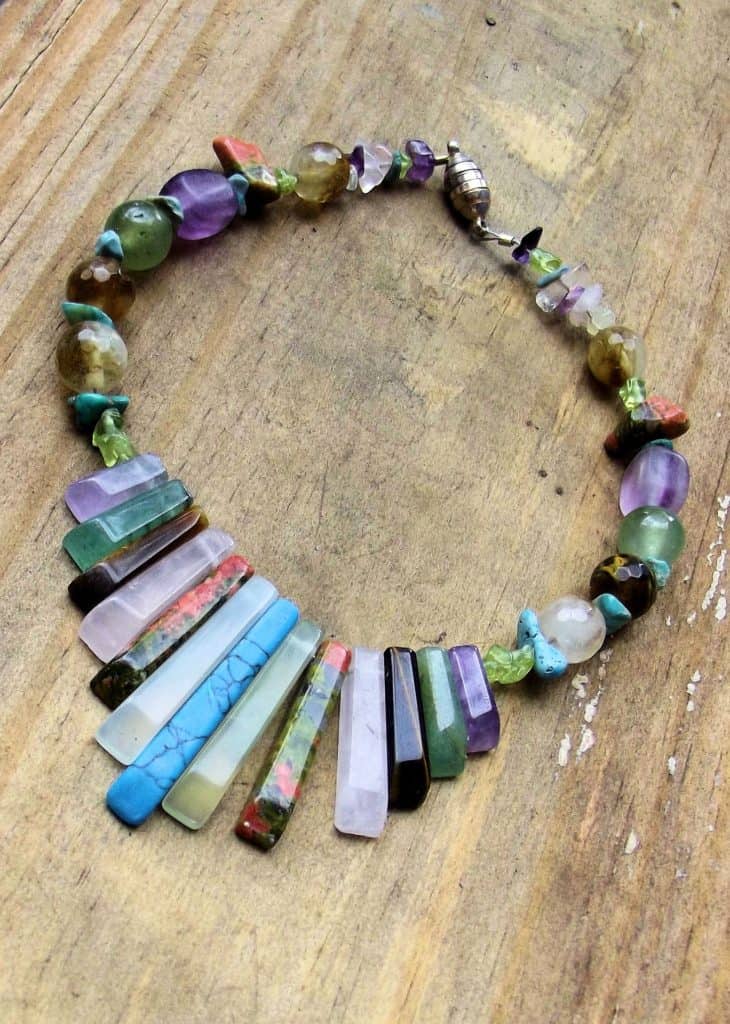
What is the best metal for making jewelry for sensitive skin?
While traditionally, people with sensitive skin only had the option to buy pure gold and silver jewelry, the options available in the market today are many. Jewelry made out of Niobium is gaining popularity as it is hypoallergenic. Tungsten, Titanium, Platinum, Stainless Steel are other metals that are hypoallergenic in addition to pure gold and silver. Check out more details on these metals here.
One must be informed about the exact composition of their gold and silver jewelry as they may contain nickel. When opting for stainless steel jewelry, go for XC45 Steel or 430 Stainless steel as the nickel content is less than 1%. Find out more here. However those allergic to chromium should avoid stainless steel jewelry completely.
All About Nickel Allergy From Jewelry
What causes nickel allergy?
The exact cause of Nickel allergy is not known! All allergies are caused by your body considering the substance as harmful. The body tries to fight it and in the process can show different symptoms for different metals and compounds. Most of these symptoms are painful or troublesome, but not fatal. I found this link useful while looking for details on nickel allergy.
How common is it to be allergic to nickel?
I am sure we all know someone who is allergic to fake jewelry or primarily nickel. About 10-20% of the people in the world are allergic to nickel. While 10% of the people in Europe and North America are allergic to nickel, a whooping 36% of women under the age of 18 in the United States are allergic to Nickel.
It has been found that women tend to be more allergic to the metal than men. This is because women generally tend to wear jewelry on different parts of their bodies, more often than men.
Can a nickel allergy from jewelry rash spread?
In most cases of nickel allergy, a rash develops on the part that comes in direct contact with nickel. However, over prolonged exposure, it might spread to the areas surrounding the part which was directly exposed. Also, once a person experiences nickel allergy, their skin becomes more sensitive to it. Thus, causing the skin to get irritated even after exposure for very little time.
Does rose gold jewelry have nickel in it?
Rose gold jewelry has large amounts of copper in it that gives jewelry pieces a rose like hue. Rose gold is generally 75% gold mixed with 20-25% copper. The remaining 5% is composed of other metals, mainly silver. Though it generally does not have nickel, certain items may have traces of nickel. If you have a sensitive skin, you must check with your jeweler if the piece has nickel in it.
Does 14k gold jewelry have nickel in it?
14 Karat gold is an alloy that is made of many different metals. In addition to gold, it has other metals like zinc, silver, copper. It may or may not have nickel in it. You must check with your jeweler before you purchase your 14 K gold jewelry.
If you are in Europe, you do not have to worry about your jewelry containing Nickel. The Nickel Directive is in place in European Union that helps safeguard people with allergies.
Conclusion
There is no cure for fake jewelry allergy! One must experiment as there is always something new coming up in the market. Different materials and textures work for different individuals.
For those even dreading the thought of metal touching their skin, a plethora of options are available these days in metal-free jewelry. Jewelry made from silicone, polymer clay, threads or crystal stones can also help you create your personalized collection.

